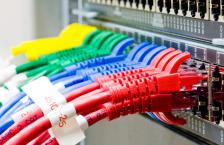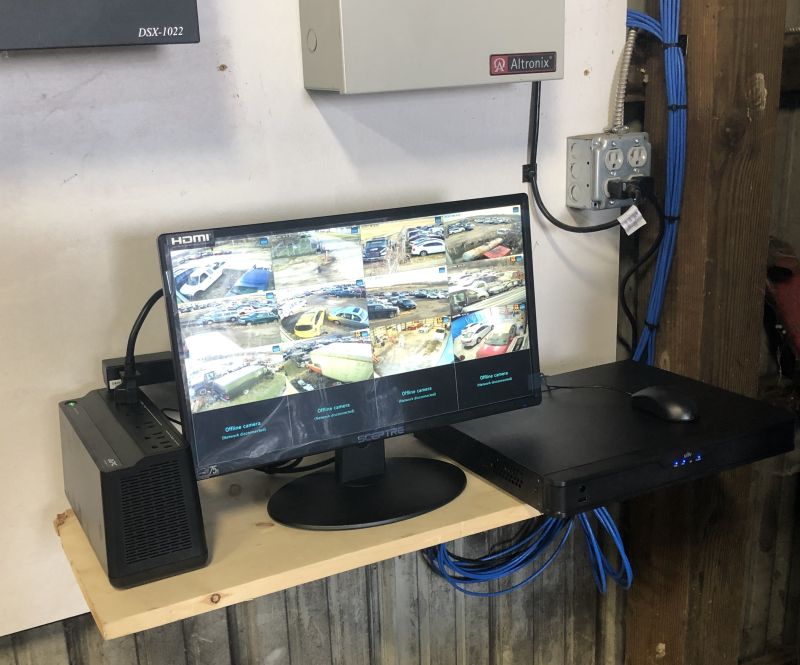As an experienced cable technician, I know firsthand how crucial it is to understand the information printed on cable jackets. Whether you’re wiring a home, office, or industrial facility, being able to quickly decipher cable markings is an essential skill that can save you time, money, and headaches. In this comprehensive guide, I’ll break down everything you need to know to read cable jackets like a pro.
Why Cable Jacket Information Matters
The markings on a cable’s outer jacket provide critical details about its specifications, ratings, and intended use. By learning to interpret this information, you’ll be able to:
- Select the right cables for your specific application and environment
- Ensure compliance with relevant safety codes and industry standards
- Avoid costly mistakes and potential hazards from using the wrong cable type
- Troubleshoot issues more effectively by quickly identifying key cable characteristics
- Estimate project costs and materials based on the required cable specs
In short, mastering cable jacket information is a valuable skill for anyone working with cables, from DIY enthusiasts to professional installers.
Decoding Cable Jacket Markings
Cable jackets are printed with a combination of letters, numbers, and symbols that convey essential details about the cable’s properties and ratings. Here are the key elements you’ll typically find:
Cable Type and Category
One of the first things you’ll notice on a cable jacket is the cable type or category. For Ethernet cables, this is indicated by “CAT” followed by a number, such as CAT5e, CAT6, or CAT6a. The category specifies the cable’s performance capabilities, including bandwidth and maximum transmission speed.
For example:
- CAT5e: Up to 1 Gbps, 100 MHz bandwidth
- CAT6: Up to 10 Gbps, 250 MHz bandwidth
- CAT6a: 10 Gbps up to 100m, 500 MHz bandwidth
Always choose a cable category that meets or exceeds the requirements of your network equipment and intended application.
Jacket Material and Ratings
The cable jacket material and its associated ratings provide crucial information about the cable’s suitability for different environments and applications. Common jacket material ratings include:
- CM (Communications): General-purpose cables for indoor use
- CMR (Riser): Cables rated for use in vertical runs between floors, in non-plenum areas
- CMP (Plenum): Cables with high fire resistance, suitable for use in plenum spaces and air ducts
- CMX (Outdoor): Cables rated for outdoor and direct burial applications
It’s essential to select cables with the appropriate jacket rating for your specific installation location to ensure safety and code compliance.
Conductor Gauge and Count
The cable jacket will also specify the conductor wire gauge (AWG) and count. The AWG indicates the thickness of the individual conductors, with a lower number representing a thicker wire. Thicker wires have less resistance and can carry signals over longer distances. Common gauges for Ethernet cables are:
- 24 AWG: Suitable for most installations up to 100m
- 23 AWG: Can support longer runs up to 150m
- 22 AWG: For extended distances up to 200m
The conductor count is usually expressed as the number of pairs, such as “4PR” for a standard 4-pair Ethernet cable.
Shielding Type
For cables used in environments with high electromagnetic interference (EMI), shielding is crucial to maintain signal integrity. The jacket will indicate the type of shielding used:
- UTP (Unshielded Twisted Pair): No shielding; suitable for most indoor applications
- F/UTP (Foiled Unshielded Twisted Pair): Overall foil shield around all pairs
- S/FTP (Shielded and Foiled Twisted Pair): Foil shield around each pair, plus an overall braided shield
Choose shielded cables when running through areas with high EMI, such as near electrical equipment or fluorescent lighting.
Fire Resistance and Smoke Ratings
For installations in plenum spaces, risers, or other fire-sensitive areas, it’s crucial to use cables with the appropriate fire resistance and smoke ratings. Common ratings include:
- LSZH (Low Smoke Zero Halogen): Cables that emit minimal smoke and no halogenic acid when burned
- FT4: Cables rated for the UL horizontal flame test
- FT6: Cables that meet more stringent flame and smoke density requirements
Always refer to local building codes and fire safety regulations to determine the required cable ratings for your specific application.
Voltage and Temperature Ratings
The cable jacket will also list the maximum voltage and temperature ratings. The voltage rating indicates the highest voltage that can be safely carried by the cable, while the temperature rating specifies the maximum ambient temperature the cable can withstand without degradation.
Ensure that the cable’s voltage and temperature ratings are suitable for your installation environment and connected equipment.
Certifications and Standards
Cable jackets also display various certifications and standards marks, indicating that the cable has been independently tested and verified to meet specific performance and safety criteria. Common certifications include:
- UL (Underwriters Laboratories): Widely recognized safety certification for North America
- CSA (Canadian Standards Association): Safety certification for Canada
- ETL (Electrical Testing Laboratories): Independent testing and certification provider
- TIA/EIA: Telecommunications Industry Association/Electronic Industries Alliance standards
Look for cables with the appropriate certifications for your region and application to ensure compliance and reliability.
Real-World Cable Examples
Now that we’ve covered the key elements of cable jacket information, let’s look at a few real-world examples to put this knowledge into practice:
Example 1
CAT6 4PR 23AWG U/UTP CM 75°C E90700 ULThis is an unshielded CAT6 Ethernet cable with 4 pairs of 23 AWG conductors. It has a CM rating for general indoor use and a 75°C temperature rating. The UL mark and E90700 file number indicate UL certification.
Example 2
CAT6A 4PR 23AWG S/FTP CMP 75°C ETL VERIFIEDHere we have a shielded CAT6a cable with 4 pairs of 23 AWG conductors. The S/FTP marking denotes both foil and braid shielding. It has a CMP rating for plenum use and a 75°C temperature rating. The ETL Verified mark indicates third-party performance testing.
Example 3
CAT5E 350MHZ 4PR 24AWG UTP CMR 75°C cULThis example shows an unshielded CAT5e cable rated for 350 MHz bandwidth, with 4 pairs of 24 AWG conductors. It has a CMR rating for riser use and a 75°C temperature rating. The cUL mark indicates UL certification for the Canadian market.
By breaking down the jacket information piece by piece, you can quickly assess whether a cable meets the requirements for your specific installation.
Tips for Selecting the Right Cable
Armed with your new knowledge of cable jacket markings, here are some tips to help you choose the best cable for your needs:
- Always select a cable category that meets or exceeds the bandwidth and speed requirements of your equipment and application, considering future growth as well.
- Ensure the cable jacket rating is appropriate for the installation environment, such as CM for general indoor use, CMR for risers, CMP for plenum spaces, or CMX for outdoor applications.
- Consider the cable’s physical characteristics, such as flexibility, diameter, and pulling tension, to ensure it’s suitable for your intended routing path.
- For long runs or areas with high EMI, opt for thicker gauge conductors (lower AWG number) and/or shielded construction to maintain signal integrity.
- Verify that the cable meets all relevant safety and performance standards for your region, such as UL, CSA, or ETL certifications.
- Choose cables from reputable manufacturers that provide clear and comprehensive jacket markings and detailed product specifications.
By following these guidelines and carefully reading the cable jacket information, you’ll be well-equipped to select the optimal cable for your project with confidence.
Conclusion
Understanding how to read and interpret cable jacket markings is a critical skill for anyone working with cables, whether you’re a professional installer or a DIY enthusiast. By deciphering the codes and ratings printed on the jacket, you can ensure that you’re using the right cable for the job, every time.
From Ethernet and coaxial to fiber optic and specialty cables, taking the time to read and understand the jacket information will help you work more efficiently, avoid costly mistakes, and ensure the safety and reliability of your installations.
So the next time you’re faced with a cable selection decision, put your cable jacket reading skills to the test. Your projects (and your clients) will thank you for it!
Do you have any other tips or insights for reading cable jackets? Share your knowledge in the comments below and help your fellow cable enthusiasts up their game!






0